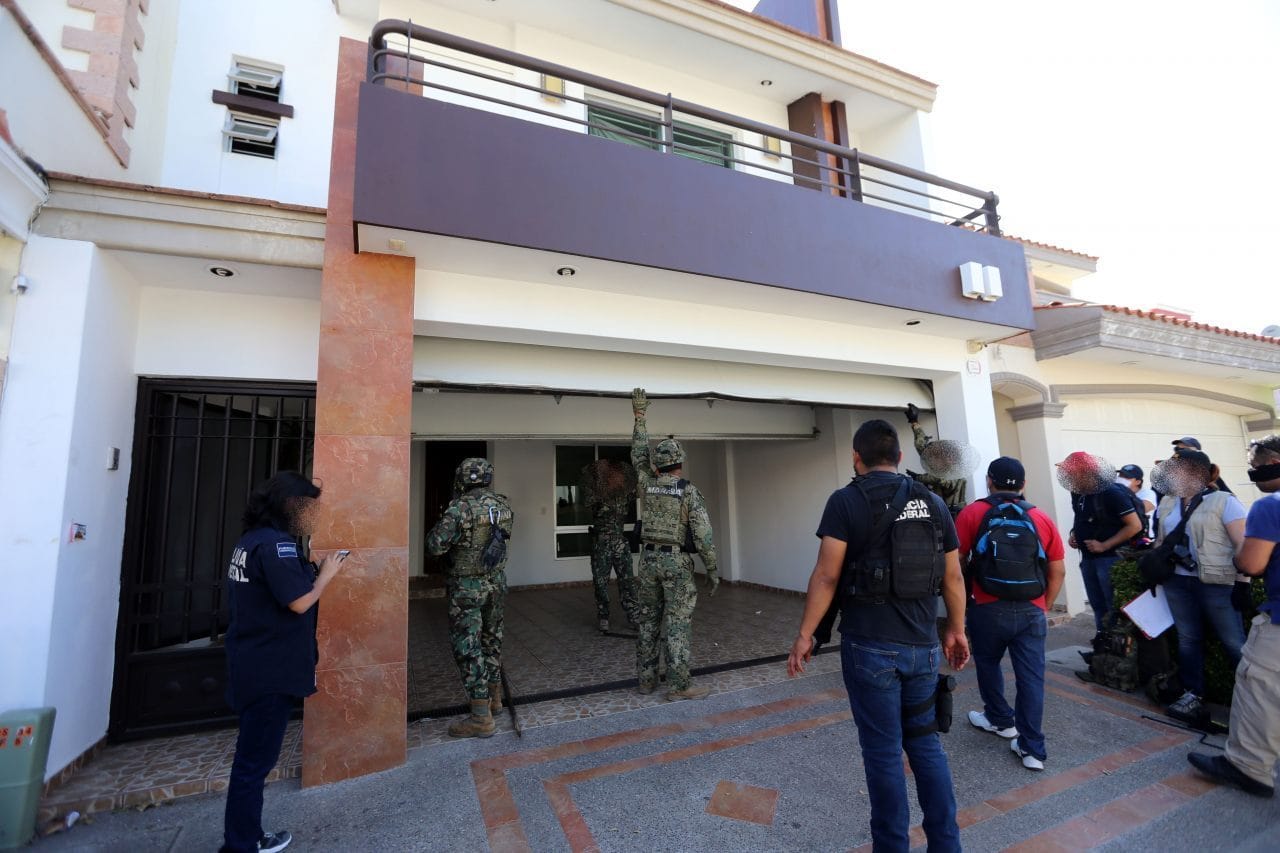Inside the Drug Lord’s Real Estate Empire
Joaquín “El Chapo” Guzmán, the notorious drug lord, was as well-known for his daring escapes as he was for his lavish lifestyle. But behind the wealth and extravagance, El Chapo was a hunted man, constantly on the move and in need of secure hideouts. His “El Chapo houses”, scattered across Mexico, weren’t just places to live, they were fortresses designed to keep him one step ahead of the law.
One such house, located in Culiacan, Sinaloa, became infamous for its connection to an elaborate escape tunnel. Imagine this: El Chapo, cornered by authorities, stepping into his bathtub and vanishing beneath the floor. This wasn’t just any hidden passage; it was a sophisticated feat of engineering, complete with lighting and ventilation, demonstrating the lengths El Chapo would go to evade capture. This escape, which played out in 2014, only added to his notoriety, turning the Culiacan house into a symbol of his elusiveness.
From Safe House to Lottery Ticket: The Fate of El Chapo’s Properties
The story of El Chapo’s houses didn’t end with his capture. In a move that sparked both intrigue and controversy, the Mexican government decided to raffle off several of his seized properties, including the very same Culiacan safe house. Their reasoning? To raise funds for social programs and send a clear message against organized crime. It was a bold move, putting El Chapo’s ill-gotten gains towards a good cause. However, the decision was not without its critics, who argued that it could be seen as glorifying his crimes rather than condemning them.
This raffle, organized by the Mexican government’s Institute to Return Stolen Goods to the People (INDEP), wasn’t just about the Culiacan house. It included various properties seized from criminals, with El Chapo’s former residence as the top prize. The goal was twofold: generate funds for social programs and showcase the government’s commitment to dismantling organized crime.
A Glimpse Behind the Walls: El Chapo’s Contrasting Lifestyle
The debate over the raffle highlighted a fascinating contradiction at the heart of El Chapo’s real estate empire. While some properties were luxurious, flaunting his wealth, others, like the safe houses, were surprisingly modest. They were designed to blend in, not stand out, reflecting the dual nature of El Chapo’s life. He was a powerful cartel leader accustomed to luxury, yet he was also a fugitive, forced into hiding and simplicity.
Photos of these properties offer a stark contrast. On one hand, you see images of opulent parties, seized luxury goods – a testament to the cartel’s wealth and influence. On the other, you’re met with the stark reality of El Chapo’s safe houses: spartan, unremarkable, and strategically located for a quick escape. This visual dichotomy underscores the complexities of El Chapo’s persona and the reach of the Sinaloa cartel.
Where Are El Chapo’s Houses Located?
The Culiacan Safe House
- Location: Culiacan, Sinaloa, Mexico
- Significance: Site of El Chapo’s daring 2014 escape through a tunnel connected to his bathtub.
- Current Status: Raffled off by the Mexican government in 2021.
The Los Mochis Safe House
- Location: Los Mochis, Sinaloa, Mexico.
- Significance: El Chapo was captured in this house in 2016, marking the end of his life on the run.
- Details: Described as an unassuming residence in a middle-class neighborhood, highlighting El Chapo’s ability to blend in.
El Chapo’s Legacy: A Complex Web of Questions
The story of El Chapo’s houses goes beyond one man’s criminal enterprise. It offers a glimpse into the complex realities of the drug war in Mexico. His ability to evade capture for so long speaks to the deep-rooted corruption and the challenges faced by those trying to dismantle powerful cartels. The escape tunnels, the safe houses, the lavish properties – they paint a picture of a conflict where lines are blurred and victory remains elusive.
The Human Cost and the Shadow of the Drug War
This narrative extends beyond bricks and mortar; it’s about the human cost of the drug war. The communities in Culiacan and Los Mochis, where El Chapo’s presence was strongly felt, bear the scars of this conflict. Their stories, largely untold, are essential to understanding the broader impact of the cartel’s operations and the ongoing fight for peace and security.
Narco-Tourism: Exploitation or Historical Insight?
The saga of El Chapo has given rise to an unsettling trend: “narco-tourism.” Tours now offer glimpses into his world, including visits to locations connected to his criminal activities. This begs the question – is this an exploitative practice that profits from notoriety, or does it offer valuable historical insights?
The Future of Seized Assets: Justice or Irony?
The Mexican government’s decision to raffle off El Chapo’s assets sparked debate. Some view it as a creative way to repurpose ill-gotten gains for social good. Others argue it trivializes his crimes. The question remains: what is the most effective and ethical way to handle assets seized from criminals? Should they benefit the communities they harmed, or is there a risk of perpetuating a cycle of exploitation?
Where is El Chapo Now?
After his audacious escapes and eventual recapture, El Chapo is now incarcerated at ADX Florence, a supermax prison in Colorado. This facility, known for its extreme security measures, houses some of the world’s most dangerous criminals. El Chapo’s days of elaborate escapes are over; life at ADX Florence is a stark contrast to his former life of power and extravagance.
Where is El Chapo’s Son Now?
Ovidio Guzmán López, also known as “The Mouse”, one of El Chapo’s sons, is currently detained at the Metropolitan Correctional Center (MCC) in Chicago. He was apprehended in Mexico in January 2023 and faces serious drug trafficking charges in the United States.
Ovidio, along with his brothers, are believed to have assumed control of the Sinaloa Cartel after their father’s imprisonment. His arrest is considered a major blow to the cartel, particularly their fentanyl operations. The US government views his extradition and prosecution as a significant step in disrupting the flow of this deadly drug.
The story of El Chapo, his houses, and his family is far from over. It continues to raise questions about justice, corruption, and the enduring impact of the drug trade. While El Chapo may be behind bars, his legacy continues to cast a long shadow over Mexico and beyond.
- Discover Long Black Pepper: Flavor & Health Benefits - April 25, 2025
- Shocking Twists: The Grownup Review: Unreliable Narration - April 25, 2025
- A Quiet Place Book vs Movie: A Deep Dive - April 25, 2025

![[France Powerball History Results] Unveiled: A Journey Through Decades of Fortune france-powerball-history-results_2](https://www.lolaapp.com/wp-content/uploads/2023/12/france-powerball-history-results_2-150x150.jpg)














